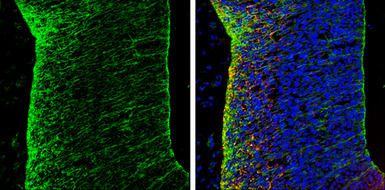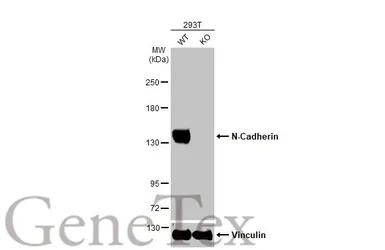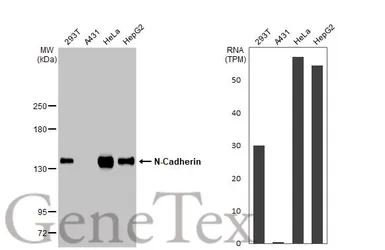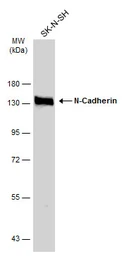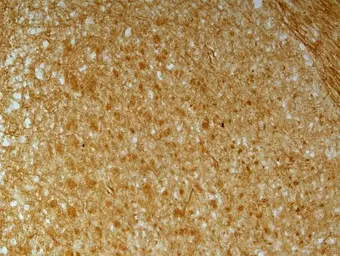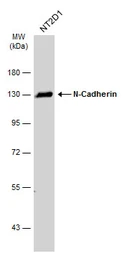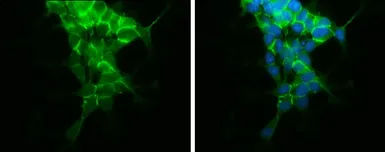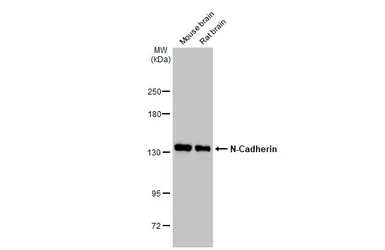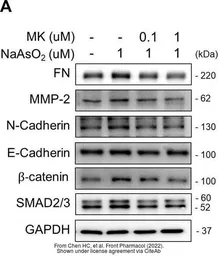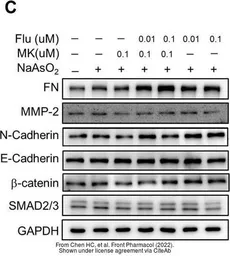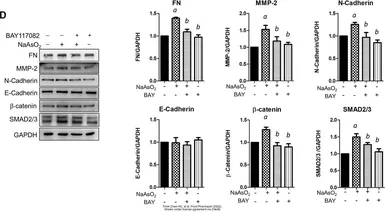N-Cadherin antibody
Cat. No. GTX127345
Cat. No. GTX127345
-
HostRabbit
-
ClonalityPolyclonal
-
IsotypeIgG
-
ApplicationsWB ICC/IF IHC-P IHC-Fr
-
ReactivityHuman, Mouse, Rat, Monkey
Summary
N-Cadherin antibody recognizes N-cadherin protein, a calcium-dependent cell adhesion protein (predicted molecular weight of 100 kDa) encoded by the CDH2 gene. N-cadherin is involved in multiple processes, including neuron development and epithelial-mesenchymal transition (EMT). Due to the prominent role of EMT in cancer progression and metastasis, antibodies targeting either N-cadherin or E-cadherin are frequently used together to study the EMT process: the upregulation of N-cadherin followed by the downregulation of E-cadherin.


